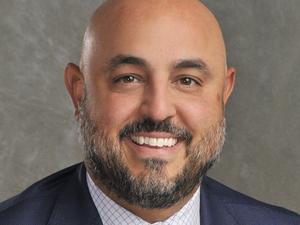
Editor’s note: The following post is part of a partnership with Creative Influence about marketing innovation happening in industries across Atlanta. Innovation isn’t just about technology. Innovation sometimes comes in the form of entirely new industries requiring completely new approaches to finding and keeping customers. This column, which will tackle how innovators are getting their new products and services adopted by buyers, will publish every first and third Thursday of the month.
Social influencers have been a boon for those stirring-up trends in fashion, cosmetics, travel, food and fitness. Making a fashion or health trend go viral, on the surface, seems to be a very different marketing task than getting adoption for a major product or service innovation. But, there’s at least one key similarity. It takes enough of the right influencers championing a product or service innovation before it tips from interesting idea to mainstream adoption. So, Atlanta’s innovation marketers from fields other than consumer package goods and retail are now taking lessons from brands like Target, Coca-Cola, Nordstrom and, even, Blue Diamond Almonds on how they spread the word by sponsoring 20-something internet stars with huge groups of followers.
“The bulk of consumer brands using influencer marketing are creating content and influence around products targeting the youth market,” said Tree McGlown, co-founder and CRO for the Atlanta-based social media intelligence platform company, Sideqik. The under-30 audience has been raised on digital devices and steeped in social media communications. “Social media is their source for discovery of new trends, products and categories. Social media influencers do a great job of creating content that brings the possibilities of products to life and the youth market knows, trusts and follows them,” McGlown said.
An example of a typical social influencer campaign? Naked Juice sponsored the lifestyle blogger Katie La Vie to include a bottle of their product (referred to by La Vie as her “gym fuel”) alongside daily fashion and beauty recommendations posted on Instagram. Naked Juice is a trendy wellness-oriented beverage, but it’s hardly an innovation.
It’s not a risky investment to try a bottle of juice. That’s not true for bigger ticket consumer innovations or for most business-to-business products and services – and, yet, they are also turning to the social influencer marketing for support. It’s just that they’re not relying on Huda Kattan, Jeffree Star, PewdiePie or Selena Gomez to sing their praises. They’re recognizing the growth of older users of social media, an increase in business usage and the erosion of work and personal boundaries in online usage. That’s brought corporate tech giants like SAP to the influencer marketing table.
“I started in analyst relations over 20 years ago and, in the business-to-business field, that meant pre-social media influencer marketing,” said Elaine Benfield, intelligent enterprise and industry marketing fellow and consumer products marketing with SAP. Benfield is Atlanta-based as the company has long had a significant presence here for, among other interests, its SAP Ariba supply chain offerings. “Now, the terms have changed and the processes and tools are more formalized. Even so, influencer marketing still comes down to the quality of relationships you build and how you leverage those to get the job done,” Benfield said.
Like most in the tech world, SAP has to innovate to compete. The company spends about $4 billion a year on R&D and has over 700 patents to its name. Influencers that matter for promoting SAP’s next batch of innovation are powerhouse technology analyst firms like Gartner and Forrester as well as niche-focused analysts and bloggers plus forward-thinking corporate technology leaders, early adopter customers and SAP’s own employee base.
Benfield suggests that if you want influencers to speak of your innovations with respect which earns their audience’s trust, they need to first respect and trust that you are a thought partner, not a peddler. “You need to bond with them on market trends. You’ve got to take their viewpoint seriously. Ask them, ‘What are you seeing?’ Take a genuine interest in what they’re working on and don’t treat them like a transaction” said Benfield.
SAP’s influencer marketing efforts necessarily go beyond social media. Here’s an example. SAP Ariba hosts a major annual event which is often a launching point for new initiatives. Its influencer efforts begin at least six months in advance. In the past, the company has sought out influencers who can deliver a prediction-oriented, thought-leadership trifecta: a bylined white paper, a speaking engagement and a video – all of which surround and support the need for innovation which SAP is addressing. While all of these assets may have a place on the show floor, they will also be promoted and distributed through SAP’s social media channels from LinkedIn, Twitter, YouTube and Facebook. The analyst firm may not directly endorse SAP in these documents but SAP’s sponsorship is clear and there is endorsement implicit in the relationship.
When the stakes are higher for a potential buyer – for instance, when making a seven-figure investment in new technology versus a three-figure investment in new sneakers – there’s a need to more carefully cultivate authentic evangelism and minimize the perception of disingenuous paid promotion.
"The stakes are higher when you are marketing business-to-business innovation that could be a bet-the-company decision for a customer,” said Scott Thomas, head of brand and product marketing with Kabbage. Earning and sustaining customer trust is a long-term commitment that you don’t want to break through a clearly contrived pay-for-play influencer shout out. “Part of the balancing act is in how influencers are rewarded by marketers and the transparency of that relationship,” Thomas said.
In a field where 80% of traditional small business loans are still made through banks with using piles of paper, Kabbage disrupted the market by making loan decisions online in about 10 minutes. Now the company is moving beyond its initial single product focus to become a multi-product company that provides a range of consultative, predictive and prescriptive advice to help small-business owners succeed through better cash-flow management. “We pay attention to the behind-the-scenes financial stuff that you don’t want to care about as you serve customers. We let the bakers bake,” Thomas said.
As Kabbage increases its role as a trusted-advisor as well as a lender, referrals from experts who are already trusted by small businesses are essential. So, Kabbage needs to ensure that it is careful about sustaining legitimacy and relevance in its influencer programs.
“It’s a media relationship where you pay for mentions but the influencer must really believe-in and understand your product. You’ve got to approach them in a partnership way,” Thomas said. “They want to be seen as experts and we can help them build and showcase their expertise. We can offer them inside access, ahead of the curve, in addition to or instead of money. We ensure that they’re among a very limited group of people who have an insider track on what’s coming from us and when. So, they can be smarter for their audience.” Those types of relationships, Thomas implied, are likely to be more credible and successful.
One challenge that category-creators like Kabbage face is in identifying the right influencers. “If you want to launch a new cosmetic or hair dryer, it’s easier to find people with influence because the market is well defined. When it comes to innovation, your category is often not well-defined so you may have to look for influencers who are adjacent to your offering if you can’t find a bullseye partner,” said Thomas. Micro-influencers (with less than 100k followers on a social platform) and nano-influencers (who may have a few as a few thousand followers but have high impact with them) are far more important for the social influence marketing effort of businesses like Kabbage and SAP than celebrity and macro influencers with broader, less defined audiences and less relatable lives or business situations.
In considering which influencers may make the biggest difference for marketers, Sideqik’s McGlown recommends looking for those that can help expand a brand’s reach beyond its natural market. “Social influencers can help broaden your market appeal. If I were promoting a book, let’s say, I would find influencers who don’t just review books but also those who might be experts in the book’s core topic. We want to get people outside of natural market (not just those looking for book),” said McGlown. “Look at adjacent audiences beyond the core buyers in your narrow niche. If you leverage that correctly, influencers can ... introduce your brand into untapped markets.”
Whether macro or nano, core market or adjacent, influencers are in strong enough demand by marketers that whole talent agencies have formed to represent them. And, they now have tools available that let them pick their own revenue paths and platforms. Looklive is an Atlanta-based venture started in 2016 by Morehouse grads, Scooter Taylor and Chidiebere Kalu as an app that let users scout celebrity and influencer fashion trends and then shop for similar but more affordable items.
The company pivoted when Looklive launched its IMX platform in early 2019 to help “creators monetize their influence by building them world-class technology products with various revenue strategies built-in.” IMX gives influencers their own turn-key home base - separate from any other social media app – where they can earn more than sponsorship money for product posts. They can charge subscription fees, sell products and promote their brand in an environment they fully control.
“It doesn’t take a lot of followers for an influencer to make a lot of money. With their own platform like IMX, influencers don’t have to worry about the gate of Facebook or Instagram anymore. They can monetize themselves in a more personalized way and free from constraints,” Looklive’s Kalu said. “There’s a recent article on the Andreesen Horowitz VC blog – ‘Making a Living Off ‘Likes’: The New Influencer Paradigm’ – that recognizes what companies like ours are doing,” Kalue added.
As Looklive claims cases of IMX customers seeing one million dollars of revenue within weeks of signing up for the platform – and other IMX competitors in the market to boot – more power is accruing to influencers and it may be harder and more expensive to gain their endorsement for your innovation going forward. For that matter, it may be harder for the original consumer products and services companies using influencer marketing to continue reaching the youth market as they move more of their conversations to private social platforms like WhatsApp and Telegram that aren’t publicly open venues.
Influencers come in many shapes and sizes. Influencer marketing isn’t just about getting sports and entertainment celebrities and internet fashion stars to tout trendy things. Influencers may be hobbyists, geeky experts, industry analysts, corporate executives, entrepreneurs or book club leaders. With tools like Sideqik to help identify on-target influencers and manage campaigns and others like Looklive’s IMX to empower the influencers, the market is getting more sophisticated and complex. Noise is on the rise. But high noise and complexity is exactly the environment in which advice from influencers matters most.
So, influencers are more important than ever if you want to an innovation to break through.
“Regardless of the type of company you have, if you want to be a leader in the market as it pushes into this next decade and beyond, you have to take a close look at influencer marketing,” McGlown noted. “For those who are uncertain, we let them know what competitors are doing and how they’re scaling and results. The general feedback is, ‘Wow! We need to take advantage of this channel!'”








